20 Mammals that are Found in the Arabian Wild Habitats
The habitat of wild animals in Saudi Arabia is diverse, ranging from expansive deserts to rocky mountains and coastal regions. The Arabian Peninsula's vast deserts provide a unique ecosystem for desert-dwelling species such as the Arabian oryx, sand gazelle, sand cat, and desert hedgehog. The mountainous areas, such as the Asir Mountains and the Hijaz Mountains, offer different habitats for species like the Nubian ibex, Arabian leopard, and Arabian wolf. Coastal regions along the Red Sea and the Arabian Gulf support marine life, including dolphins, dugongs, and sea turtles. The varied habitats of Saudi Arabia provide homes for a rich array of wildlife, each uniquely adapted to their specific environment. In this post, we will discuss about 20 wild mammals that are found in the Arabian Peninsula.
1. Rock Hyrax
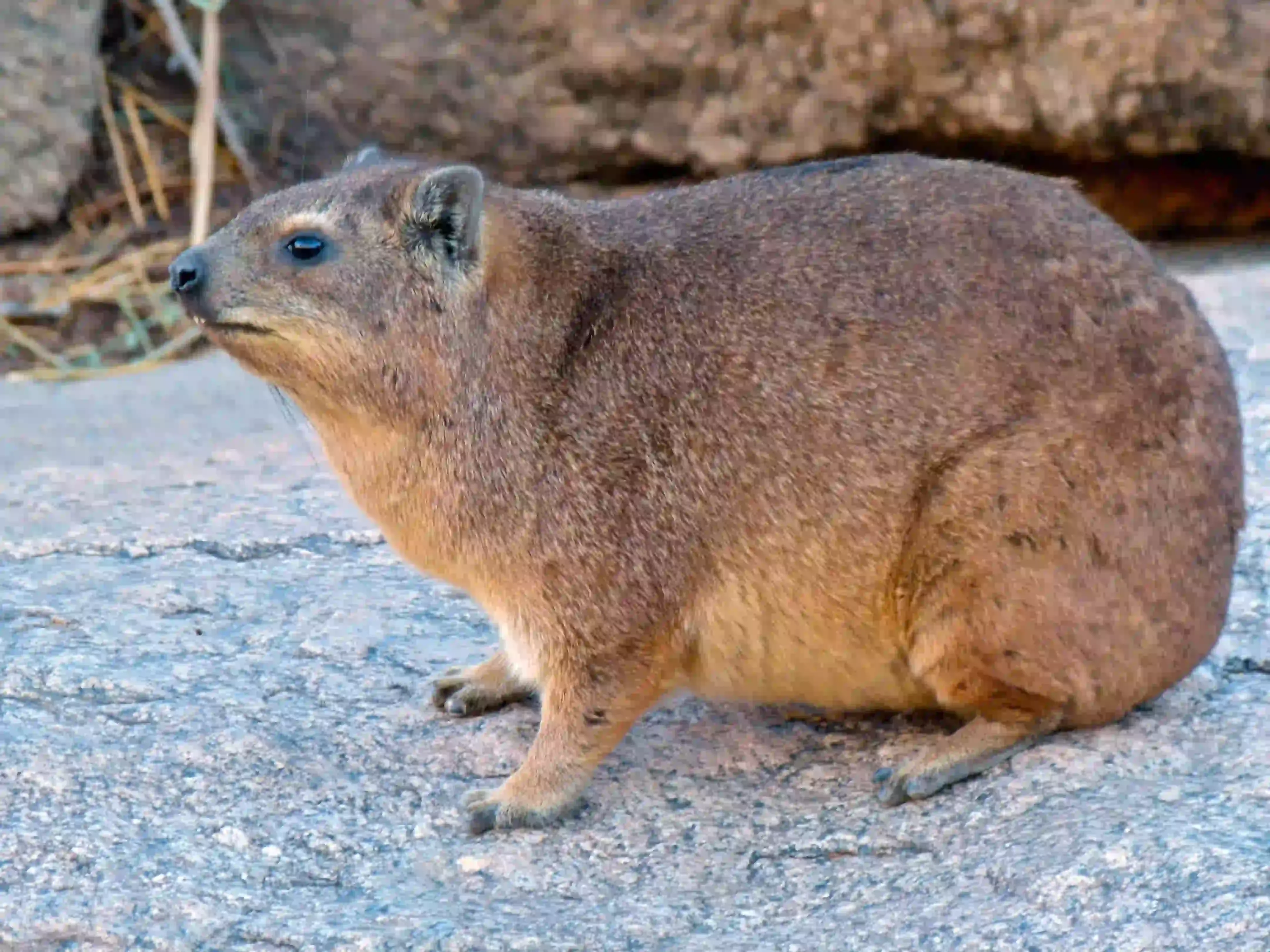 |
| Rock Hyrax |
The Rock hyrax, scientifically known as Procavia capensis, is a small herbivorous mammal native to rocky habitats in Africa and the Middle East. Despite its appearance, it is not a rodent but is actually more closely related to elephants and manatees. With a stout body, a short tail, and small, rounded ears, they have adapted well to their rocky environments. They live in social groups and communicate through a series of vocalizations and scent markings.
2. Arabian Oryx
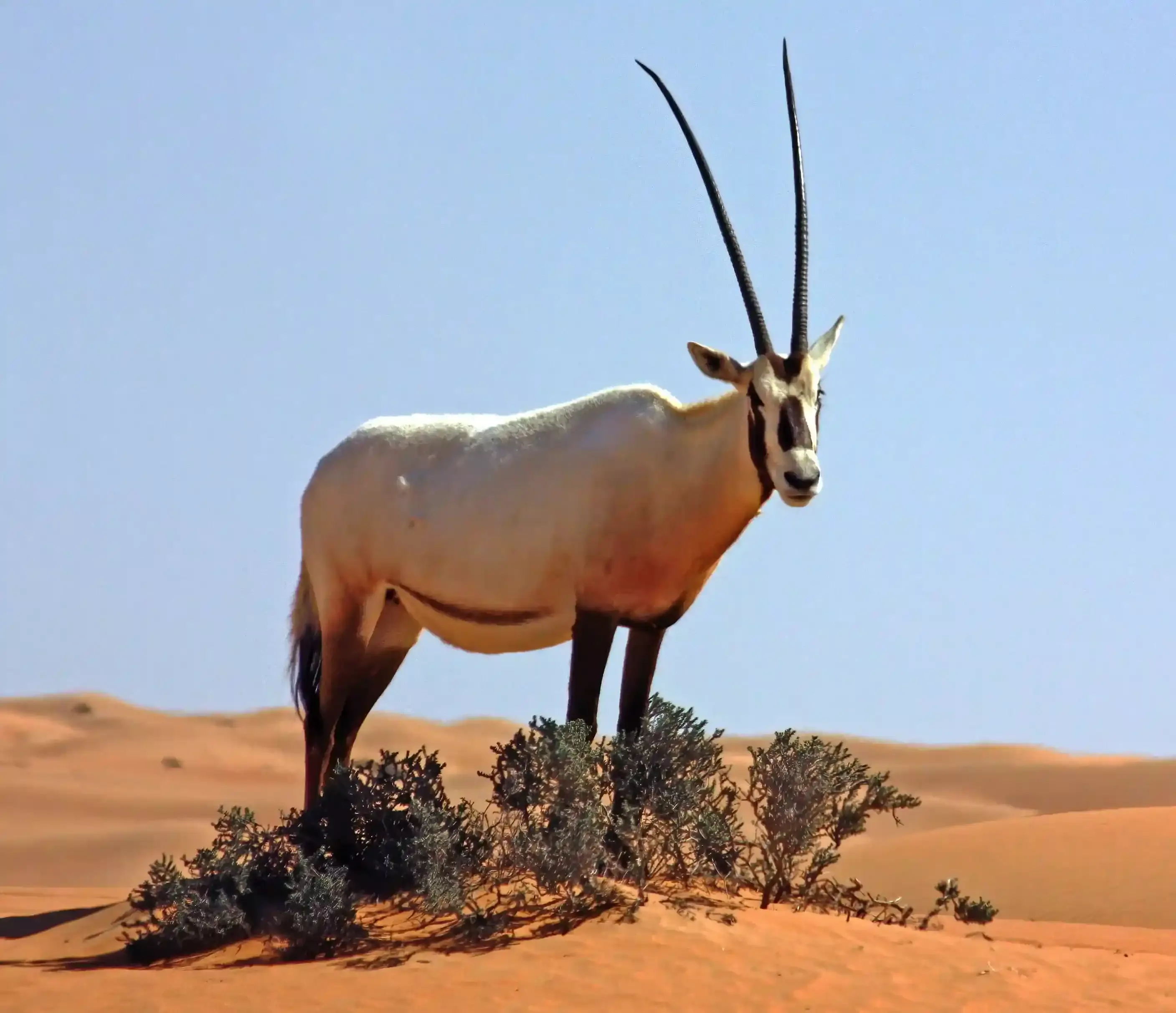 |
| Arabian Oryx |
The Arabian oryx is a magnificent
desert-dwelling antelope native to the Arabian Peninsula. It is known for its
striking white coat, long, elegant horns, and slender physique. Once on the
brink of extinction, the Arabian oryx made a remarkable recovery through
conservation efforts. These remarkable creatures are well-adapted to the harsh
desert environment, with their ability to withstand high temperatures and water
scarcity. They are highly social animals, forming herds that graze on sparse
vegetation and obtain moisture from the plants they consume.
3. Arabian Tahr
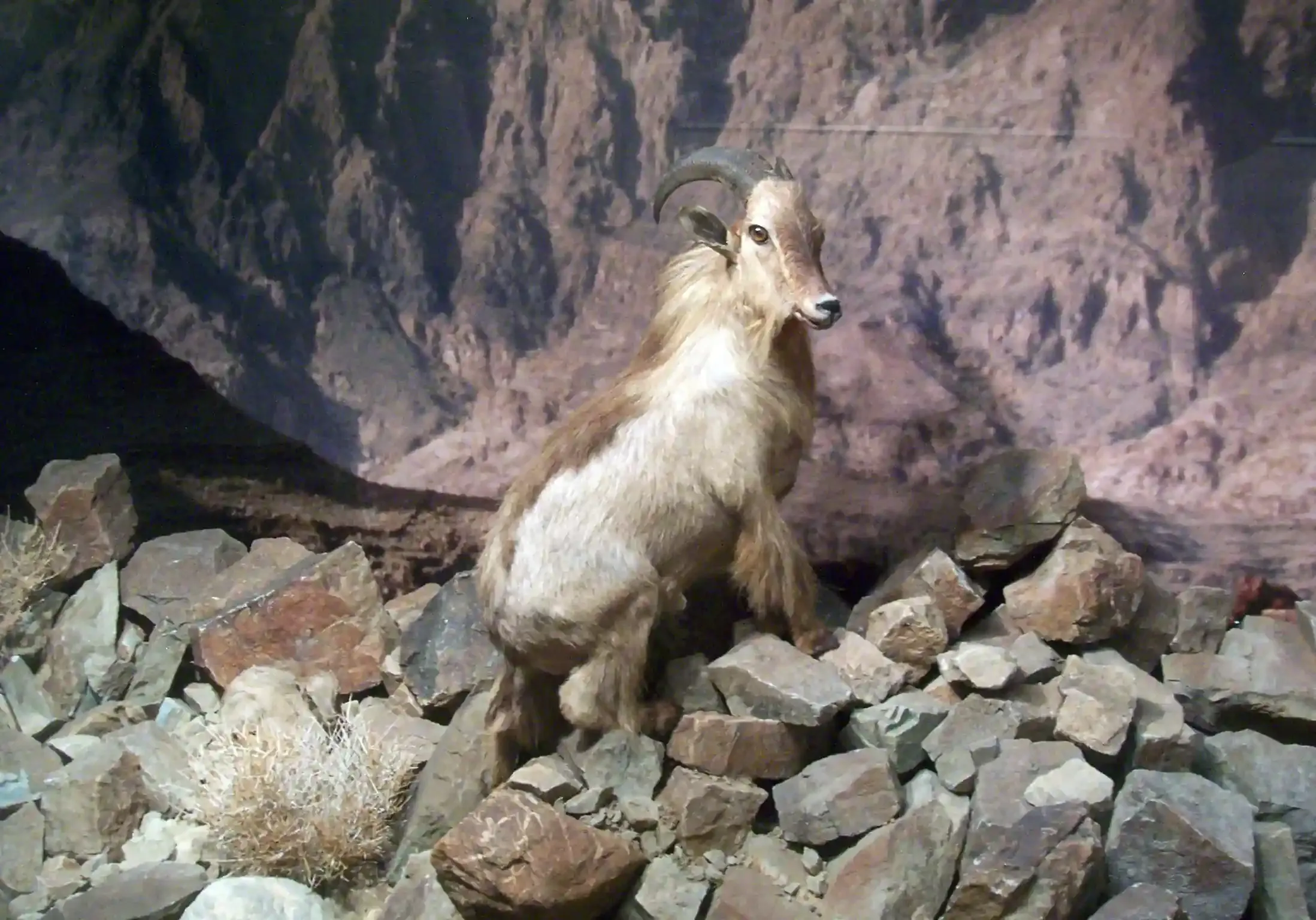 |
| Arabian Tahr |
This medium-sized mammal is well adapted
to its rugged habitat, with long, sharp hooves for navigating steep terrain.
The Arabian tahr has a compact body, short legs, and a shaggy coat that helps
it withstand cold temperatures. Males are distinguished by their impressive
curved horns. The Arabian tahr is a solitary creature, typically found in pairs
or small groups. They are herbivorous, feeding on a variety of vegetation,
including grasses, leaves, and shrubs. Due to habitat loss and hunting, the
Arabian tahr is considered an endangered species.
4. Striped Hyena
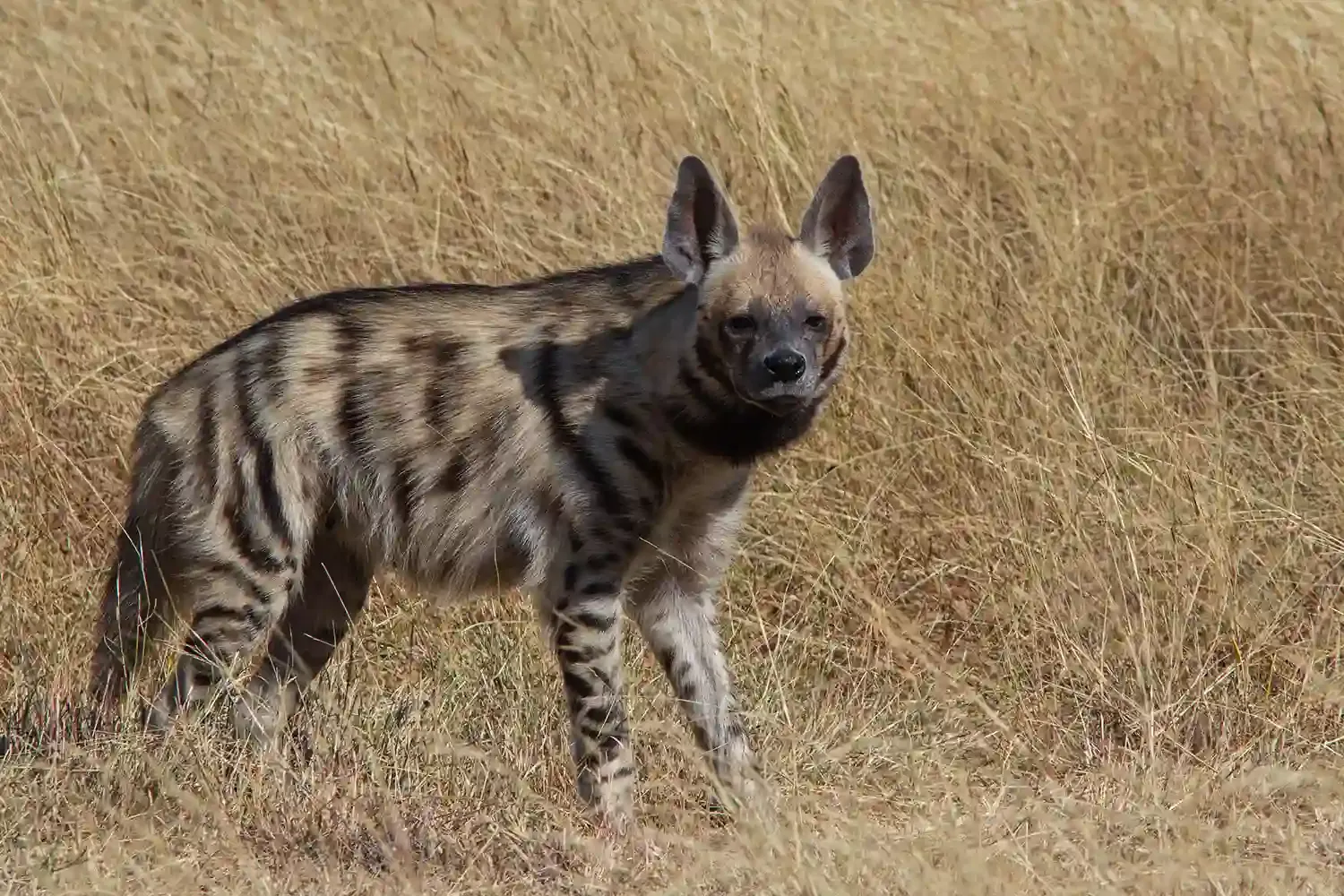 |
| Striped Hyena |
The Striped hyena, or Hyaena hyaena, is a
medium-sized carnivorous mammal found in parts of Africa, the Middle East, and
Asia. Known for its distinctive black and white striped coat, this elusive
hyena species has a robust build, a large head, and powerful jaws. It is
primarily a scavenger, feeding on carrion and discarded food, but it also hunts
small to medium-sized prey when the opportunity arises. The Striped hyena is
predominantly nocturnal, using its acute sense of smell and excellent hearing
to navigate its surroundings.
5. Nubian Ibex
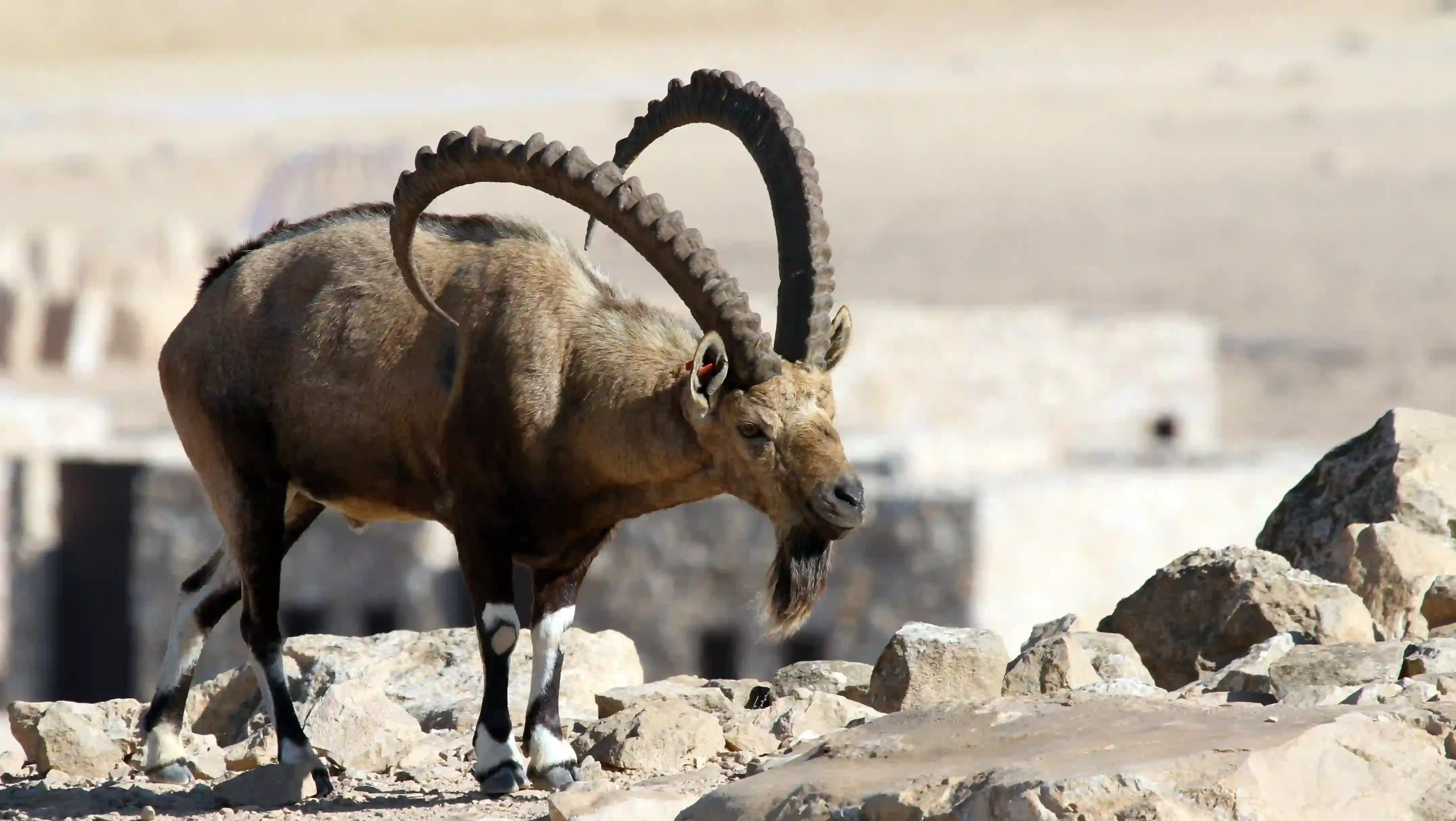 |
| Nubian ibex |
The Nubian ibex is a magnificent wild goat
species found in the mountainous regions of North Africa and the Middle East.
With its striking appearance and impressive curved horns, the Nubian ibex is a
true symbol of rugged beauty.
With a striking chestnut-brown coat and
white underparts, the Nubian ibex is well adapted to its arid and rugged
habitat. They are known for their remarkable climbing abilities, effortlessly
scaling steep cliffs and rocky terrain.
Nubian ibex have a varied diet, feeding on
grass, leaves, and shrubs. They live in small herds, led by a dominant male.
6. Rüppell’s Fox
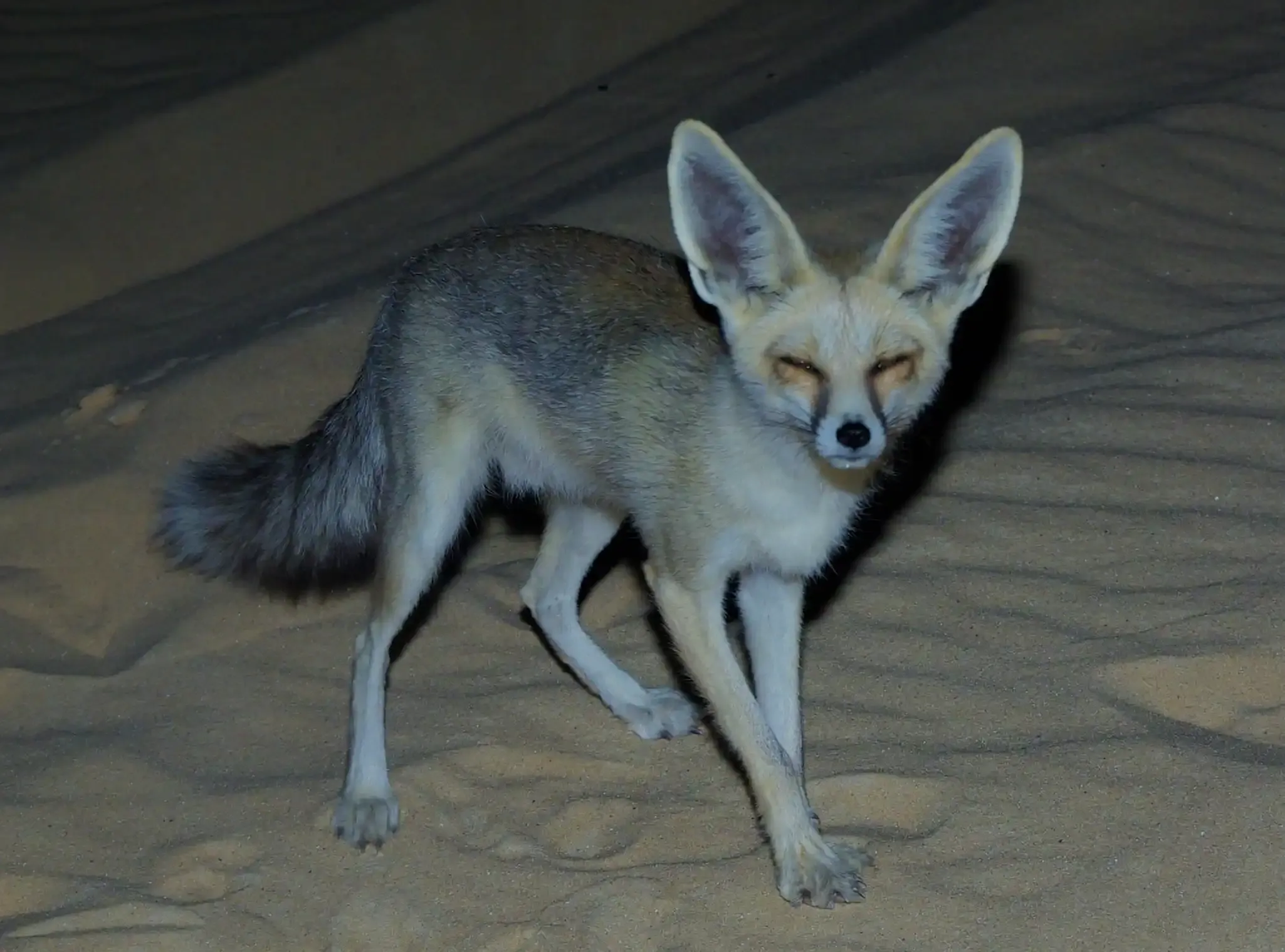 |
| Rüppell’s fox |
Rüppell's fox is a small desert-dwelling fox species found in the arid regions of North Africa and the Arabian Peninsula. Named after the German naturalist Eduard Rüppell, these foxes have adapted to survive in harsh desert environments. Rüppell's fox is known for its incredible ability to survive in extreme conditions, relying on its exceptional digging skills to create burrows and find shelter from the scorching heat. These nocturnal hunters primarily feed on small mammals, insects, and plant matter.
7. Common Genet
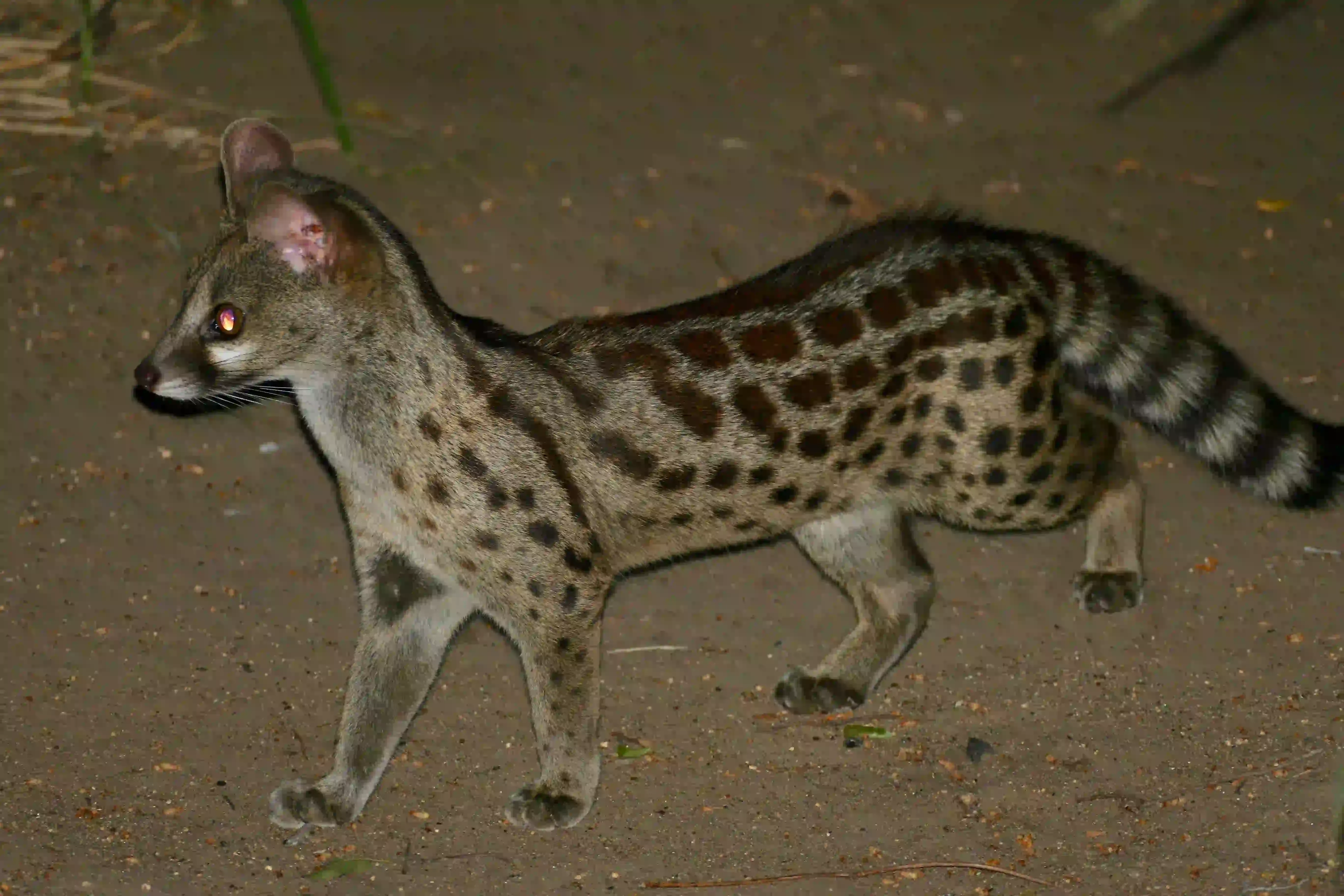 |
| Common Genet |
The Common Genet is a slender and graceful
carnivorous mammal native to parts of Europe, Africa, and the Middle East. With
its long body, spotted fur, and ringed tail, the genet exhibits exquisite
beauty. It is primarily nocturnal and arboreal, spending its nights hunting for
prey like rodents, birds, and insects. The genet is an agile climber adept at
navigating trees and shrubs in search of food. It is also known for its ability
to emit a musky scent for territorial marking. Known for their adept climbing
and jumping skills, common genets are skilled predators and excellent tree
climbers.
8. Hamadryas Baboon
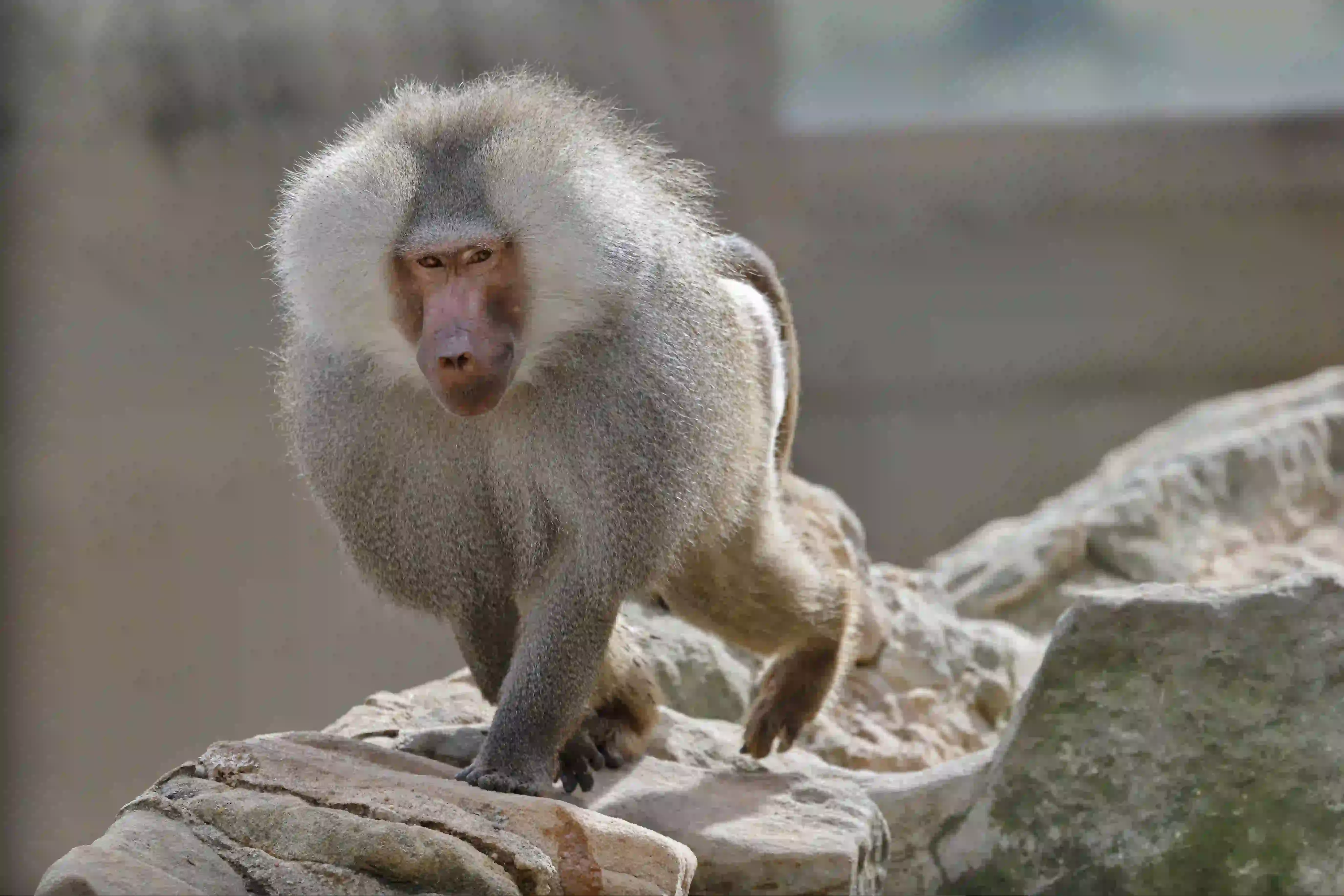 |
| Hamadryas Baboon |
The Hamadryas baboon is a large and
distinctive species of baboon found in the rocky regions of the Arabian
Peninsula and northeastern Africa. These social primates exhibit a complex
social structure, living in large groups called troops that consist of a
dominant male, multiple females, and their offspring. With their striking
appearance, including a long silver-grey mane and a reddish face, Hamadryas
baboons are easily recognizable. They are highly adaptable and can survive in
various habitats, including deserts and rocky cliffs. These omnivorous animals
feed on a wide range of foods, including fruits, leaves, insects, small
mammals, and even birds. Their unique social dynamics and impressive physical
abilities make them a captivating species to observe.
9. Mountain Gazelle
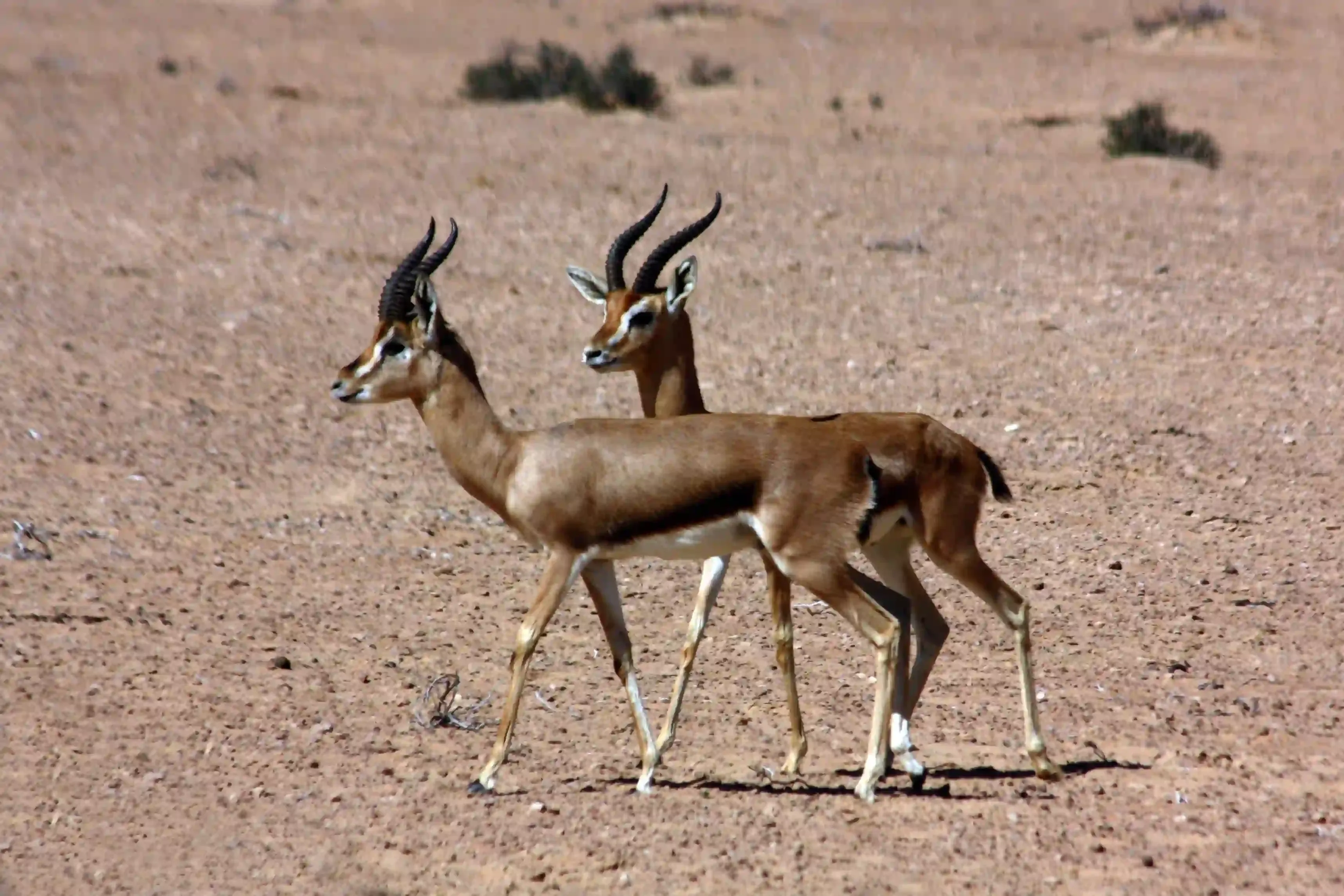 |
| Mountain Gazelle |
The mountain gazelle is a graceful and agile antelope species found in the mountainous regions of the Middle East. With its slender build, light brown coat, and distinctive white rump patch, the mountain gazelle is a strikingly beautiful creature. It is well adapted to rocky and hilly terrain, using its strong legs and nimble movements to navigate steep slopes. Mountain gazelles primarily feed on grasses, leaves, and shrubs, and they have keen senses to detect potential predators.
10. Goitered Gazelle
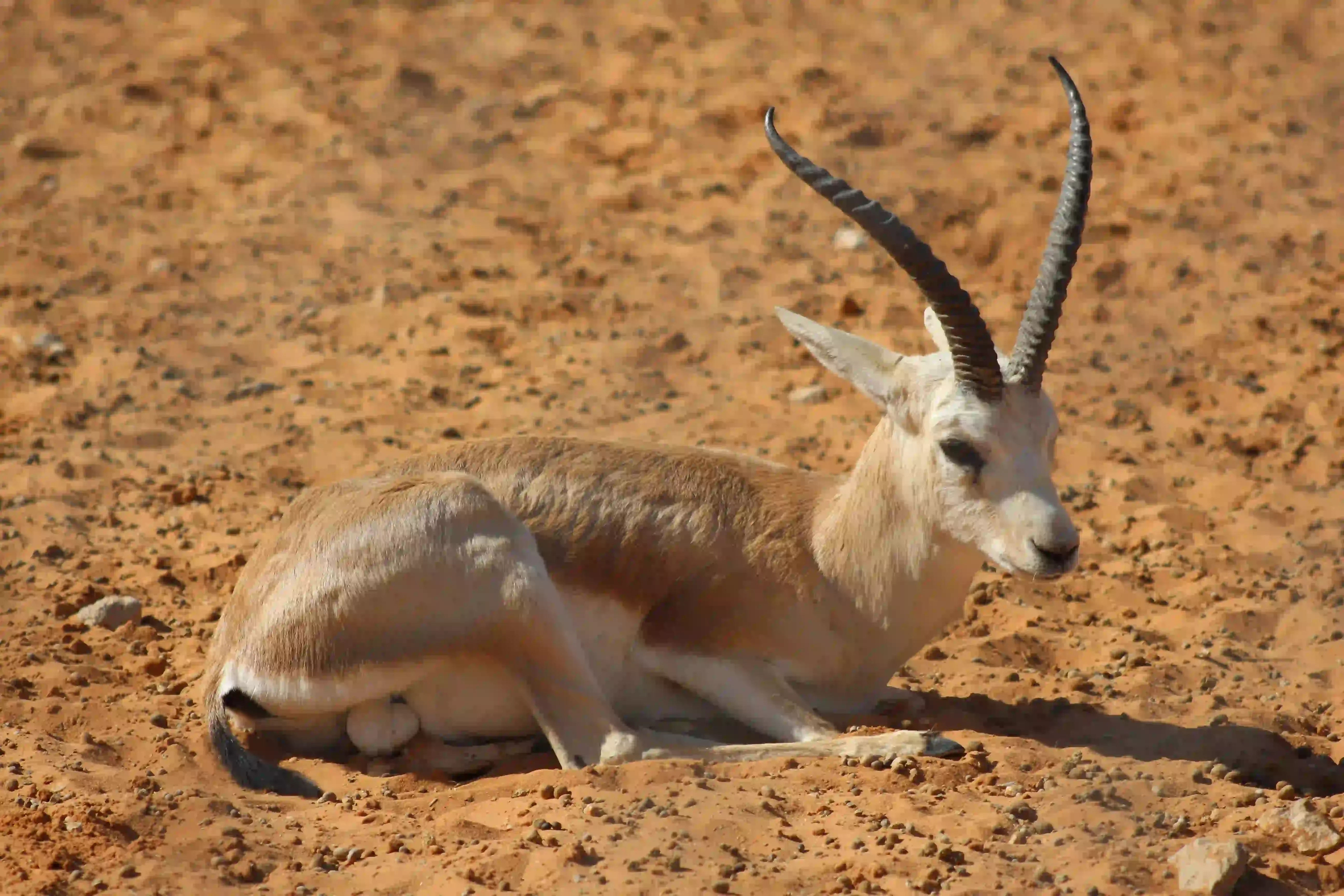 |
| Goitered Gazelle |
The goitered gazelle is a captivating
antelope species native to arid and semi-arid regions of Central Asia and the
Middle East. With its slender and elegant build, this gazelle possesses
distinctively lyre-shaped horns in males and a light brown to reddish-brown
coat that camouflages well in its desert habitat. Goitered gazelles are well
adapted to survive in harsh environments and are capable of enduring long
periods without water. They are agile runners, reaching speeds of up to 60 km/h
(37 mph) when fleeing from predators. These herbivores primarily feed on
grasses, leaves, and shrubs.
11. Arabian Leopard
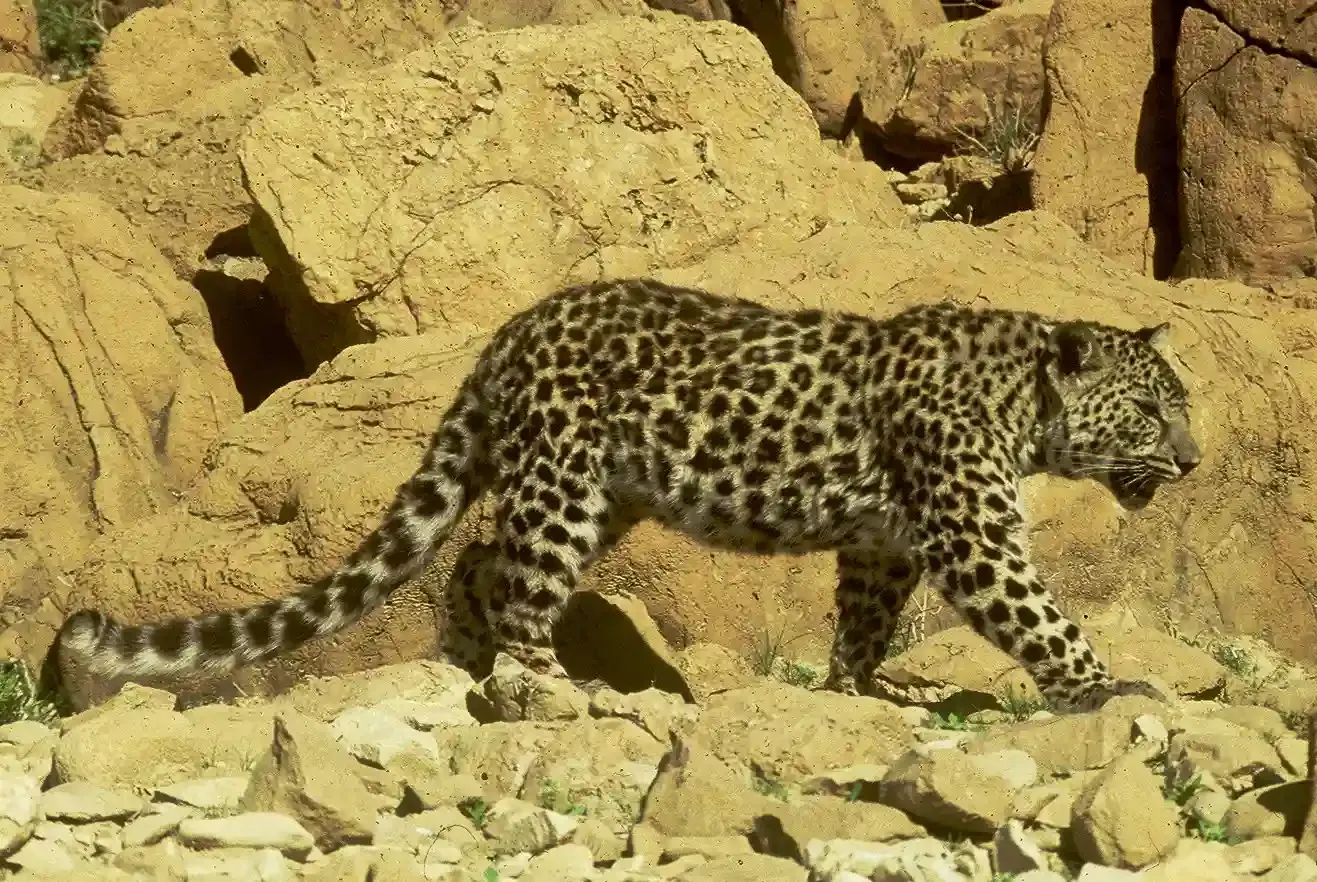 |
| Arabian Leopard |
The Arabian leopard is a critically
endangered big cat species native to the mountainous regions of the Arabian
Peninsula. With its stunning spotted coat and agile body, the Arabian leopard
is a true symbol of grace and strength. Unfortunately, it is one of the rarest
subspecies of leopard, with a dwindling population due to habitat loss,
hunting, and human-wildlife conflicts.
12. Caracal
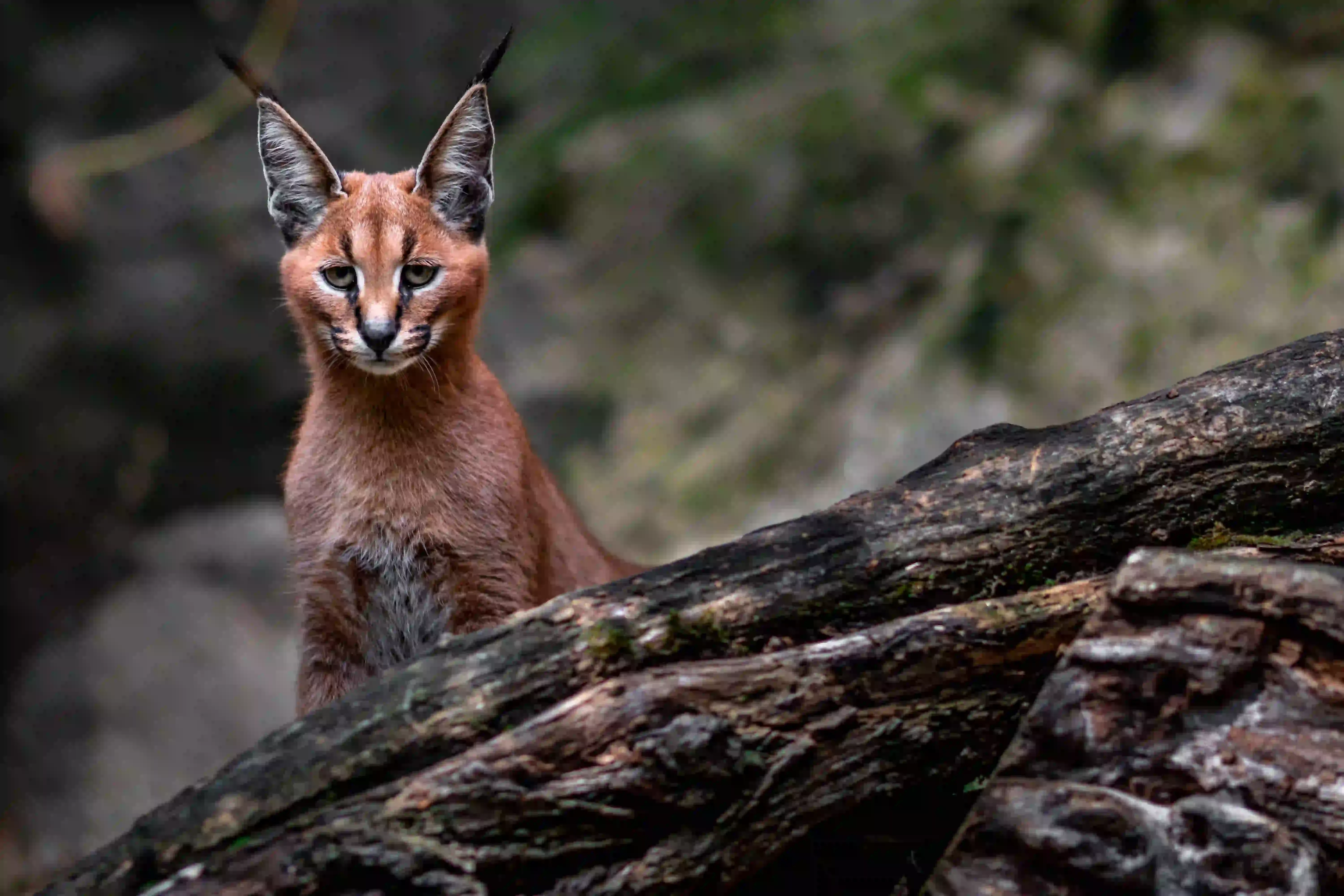 |
| Caracal |
The caracal is a unique and
elusive wildcat subspecies found in the Arabian Peninsula, including Saudi
Arabia. These medium-sized wildcats are known for their striking appearance,
featuring tufted ears and a sleek, sandy-colored coat with faint spots. Saudi
Arabian caracals inhabit various habitats, from arid deserts to rocky areas.
They are skilled hunters, preying on small mammals, birds, and reptiles.
13. Arabian Wolf
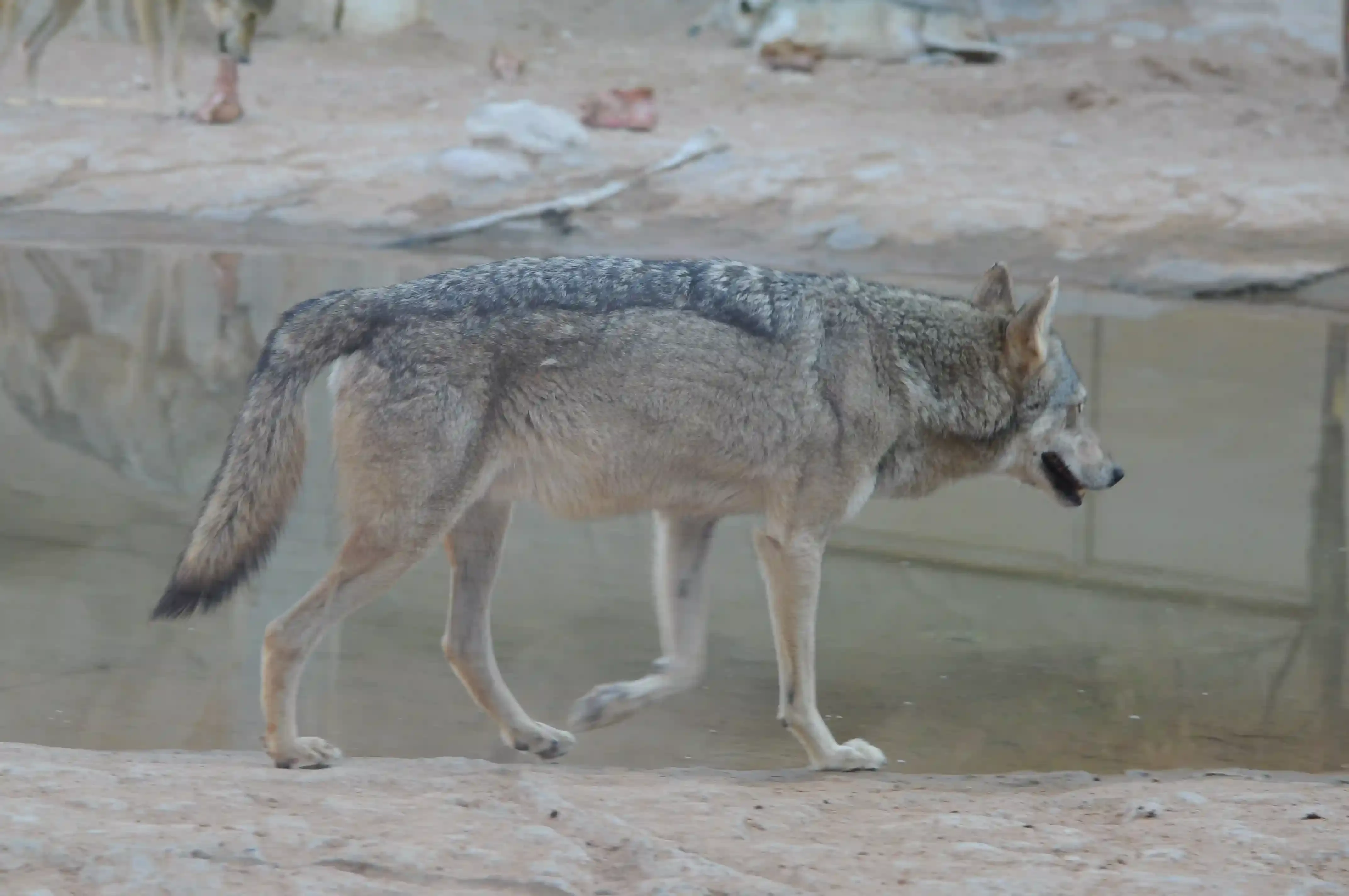 |
| Arabian Wolf |
The Arabian wolf is a subspecies of gray
wolf found in the Arabian Peninsula. With its distinctive appearance and
adaptability to arid environments, the Arabian wolf is a remarkable predator.
It has a sandy-colored coat, well-suited for camouflage in desert landscapes.
Arabian wolves are highly social animals, forming tight-knit packs for hunting
and raising their young. They primarily prey on small to medium-sized mammals,
such as rodents and hares.
14. Sand Cat
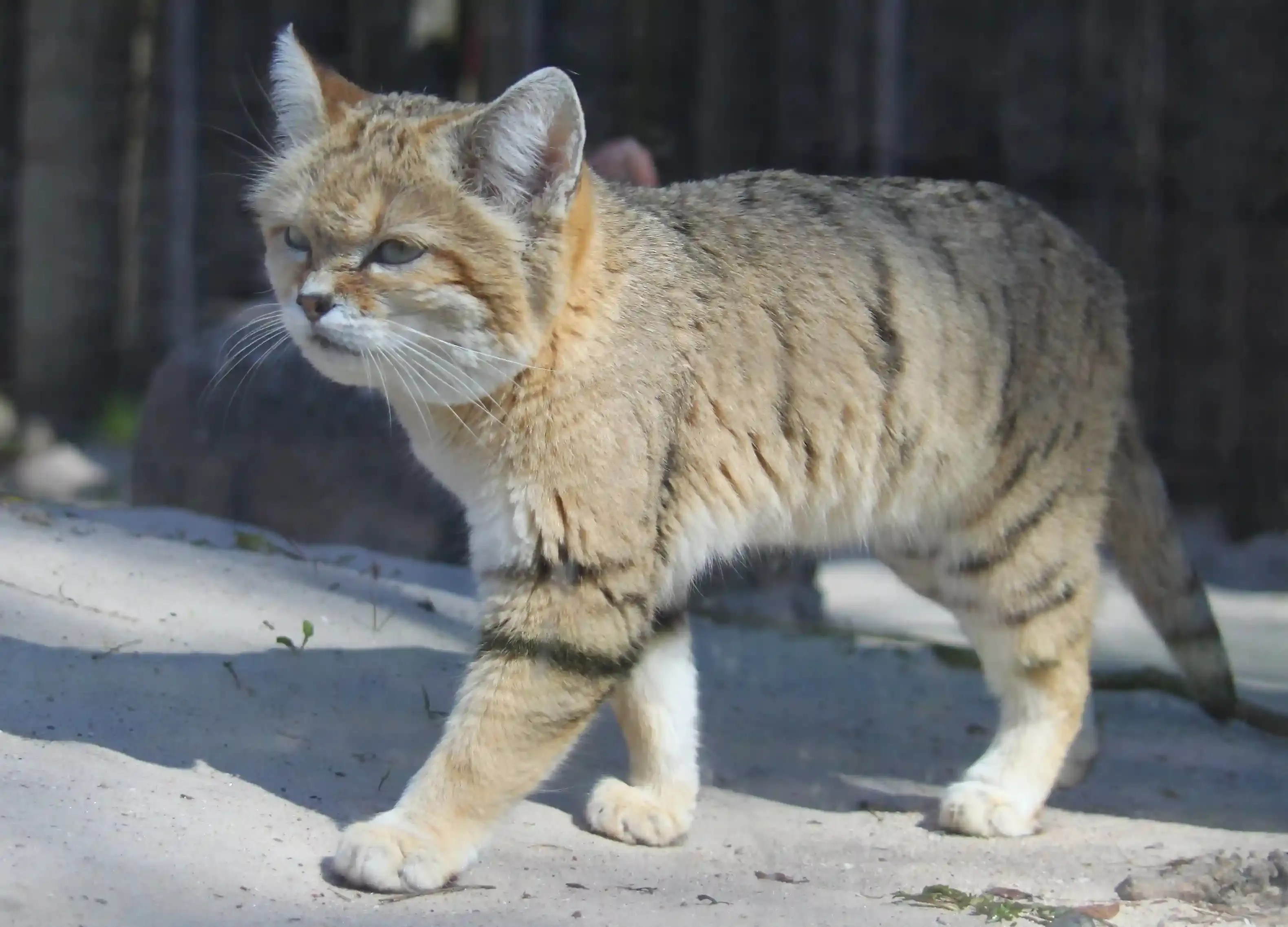 |
| Sand Cat |
The sand cat is a small, desert-dwelling
wildcat known for its remarkable adaptations to arid environments. With its
thick fur, broad head, and distinctive tufted ears, the sand cat is perfectly
equipped to thrive in sandy habitats. They have fur-covered paws that allow
them to move stealthily on loose sand. These solitary and nocturnal hunters
primarily feed on small rodents and reptiles. Sand cats are well-adapted to
survive extreme temperatures and can go for long periods without drinking
water, obtaining moisture from their prey.
15. Honey Badger
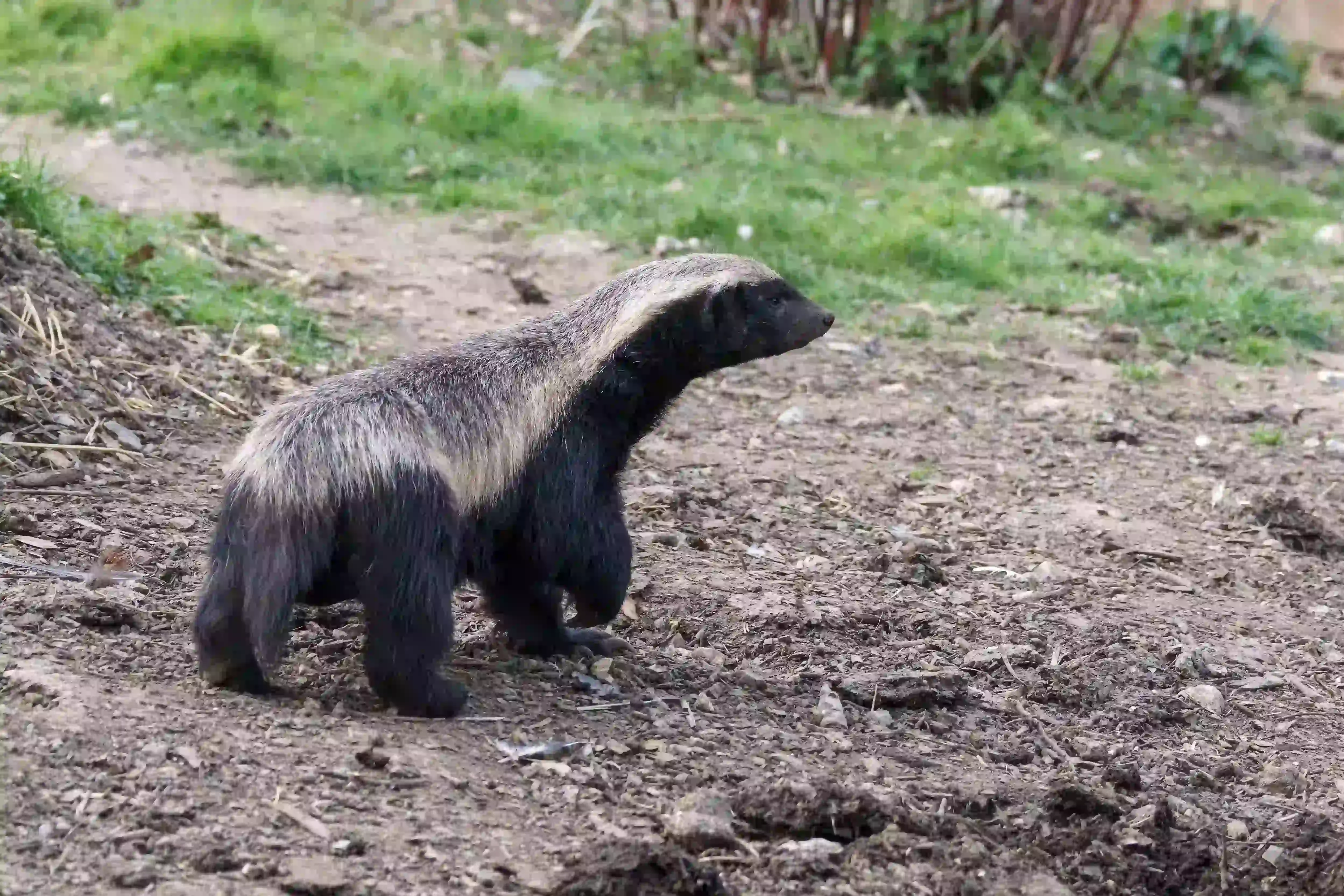 |
| Honey Badger |
The honey badger is a tenacious and
fearless mammal found in the Arabian Peninsula. These tenacious and fearless
creatures have a compact, muscular build with a thick and tough skin that
provides protection against potential threats. They are known for their strong
jaws, sharp claws, and aggressive nature when confronted. It has a broad diet
that includes small mammals, birds, reptiles, and even honey from beehives,
hence its name. The honey badger is highly adaptable, inhabiting various
habitats from deserts to mountainous regions.
16. Golden Jackal
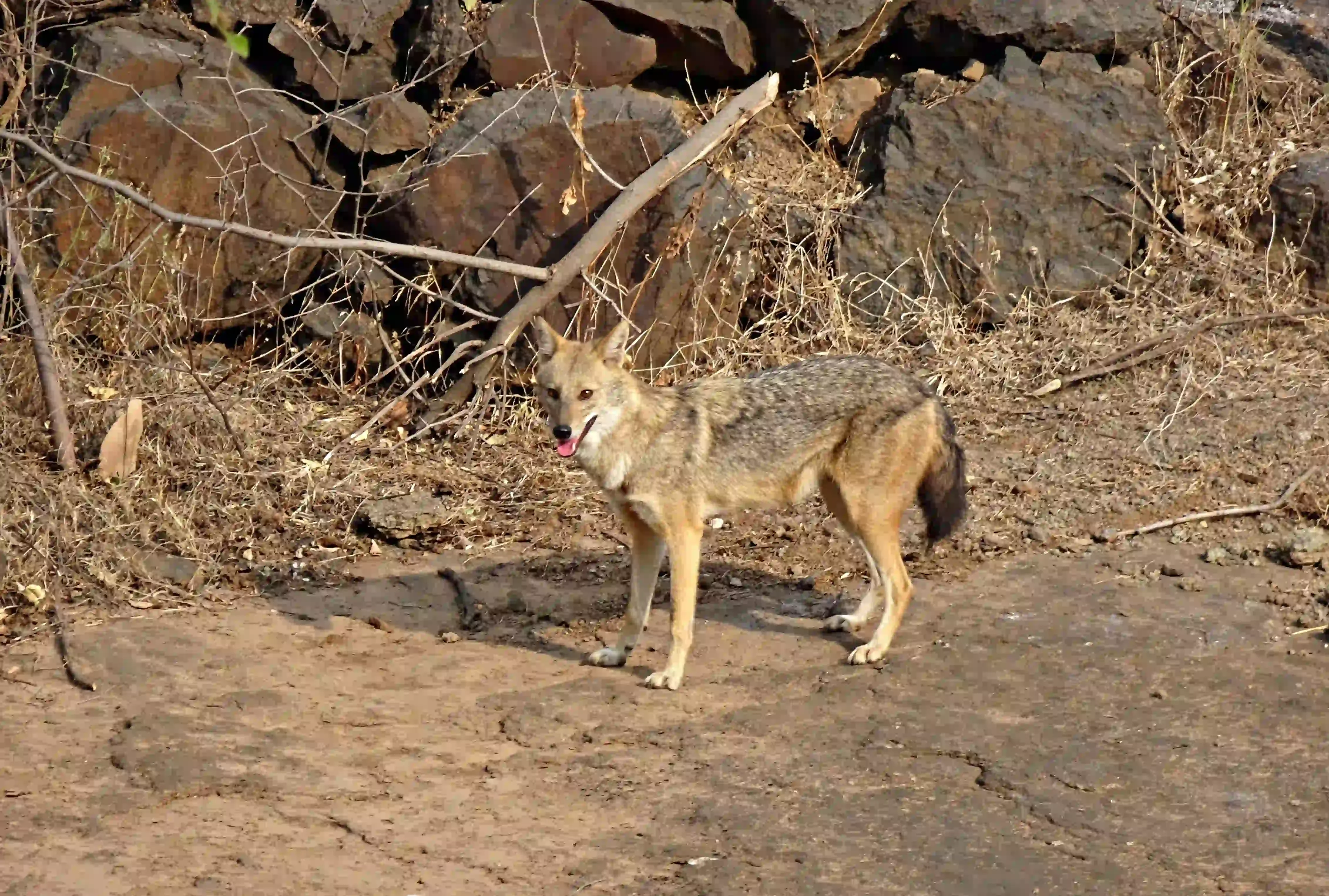 |
| Golden Jackal |
The Golden jackal is a canid species found
in various habitats across the Arabian Peninsula, including Saudi Arabia. These
adaptable and resourceful creatures are known for their distinctive golden or
tawny fur, which gives them their name. Golden jackals are opportunistic
omnivores, feeding on a diverse diet of small mammals, birds, reptiles,
insects, fruits, and carrion. They are highly adaptable to different
environments, from deserts to forests, and are known for their remarkable
intelligence and social behavior.
17. Cape Hare
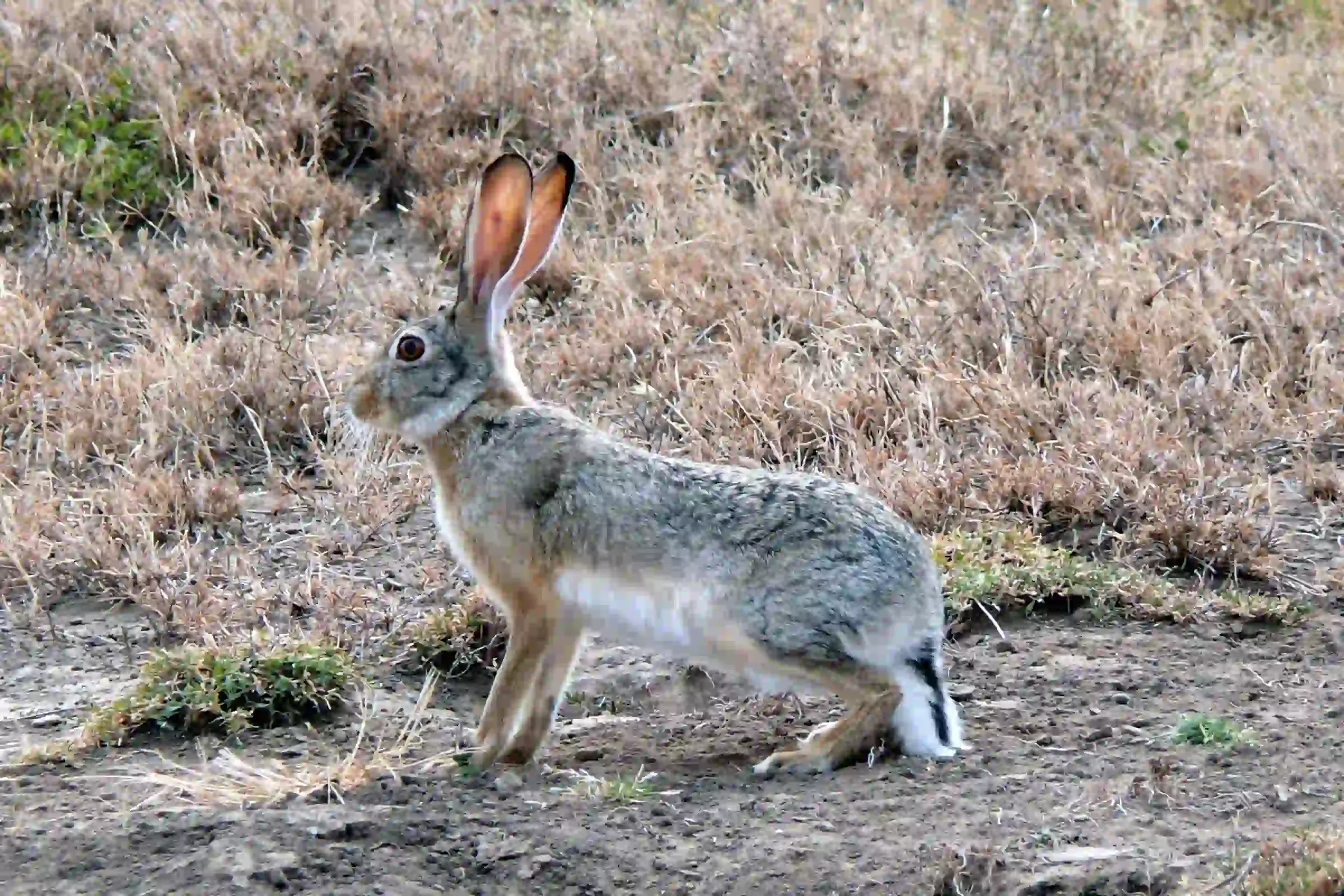 |
| Cape Hare |
The Cape Hare is a species of hare that
can be found in various habitats, including parts of Saudi Arabia. These hares
have adapted to survive in arid and semi-arid environments, including deserts
and grasslands. They have long ears, strong hind legs, and a sandy-brown or
grayish coat, providing camouflage in their surroundings. Cape Hares are
herbivores, primarily feeding on grasses, leaves, and other plant matter. They
are known for their agility and speed, which allow them to evade predators.
18. Crested Porcupine
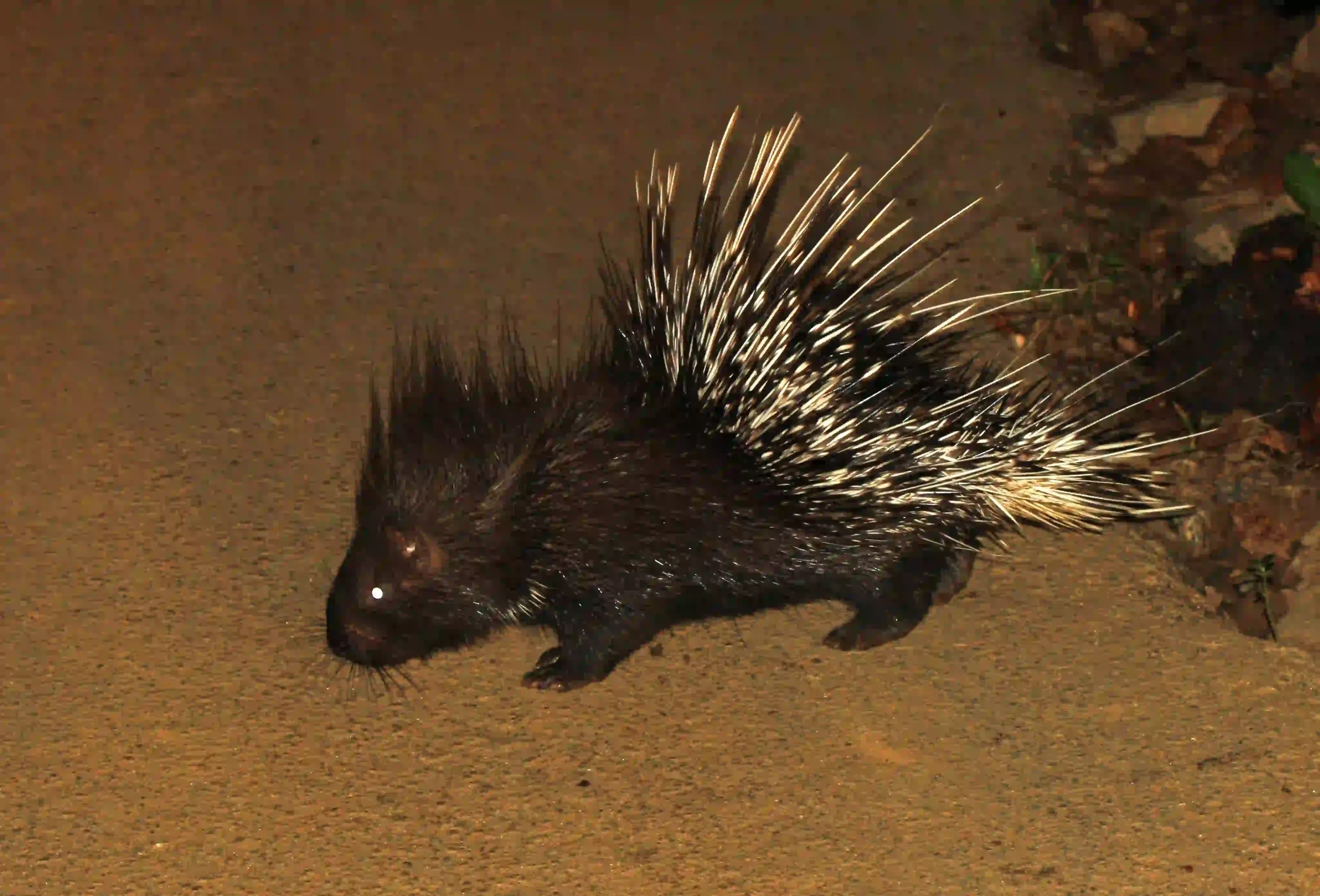 |
| Crested Porcupine |
The Indian crested porcupine is a species
of porcupine found in various regions of Asia, including parts of Saudi Arabia.
These large rodents are known for their impressive quills that cover their
bodies, which they use for defense against predators. With a stocky build,
short legs, and a distinctive crest of long quills on its back, the Indian
crested porcupine is a unique and recognizable species. They are primarily
herbivores, feeding on roots, tubers, bark, and other plant material.
19. Desert Hedgehog
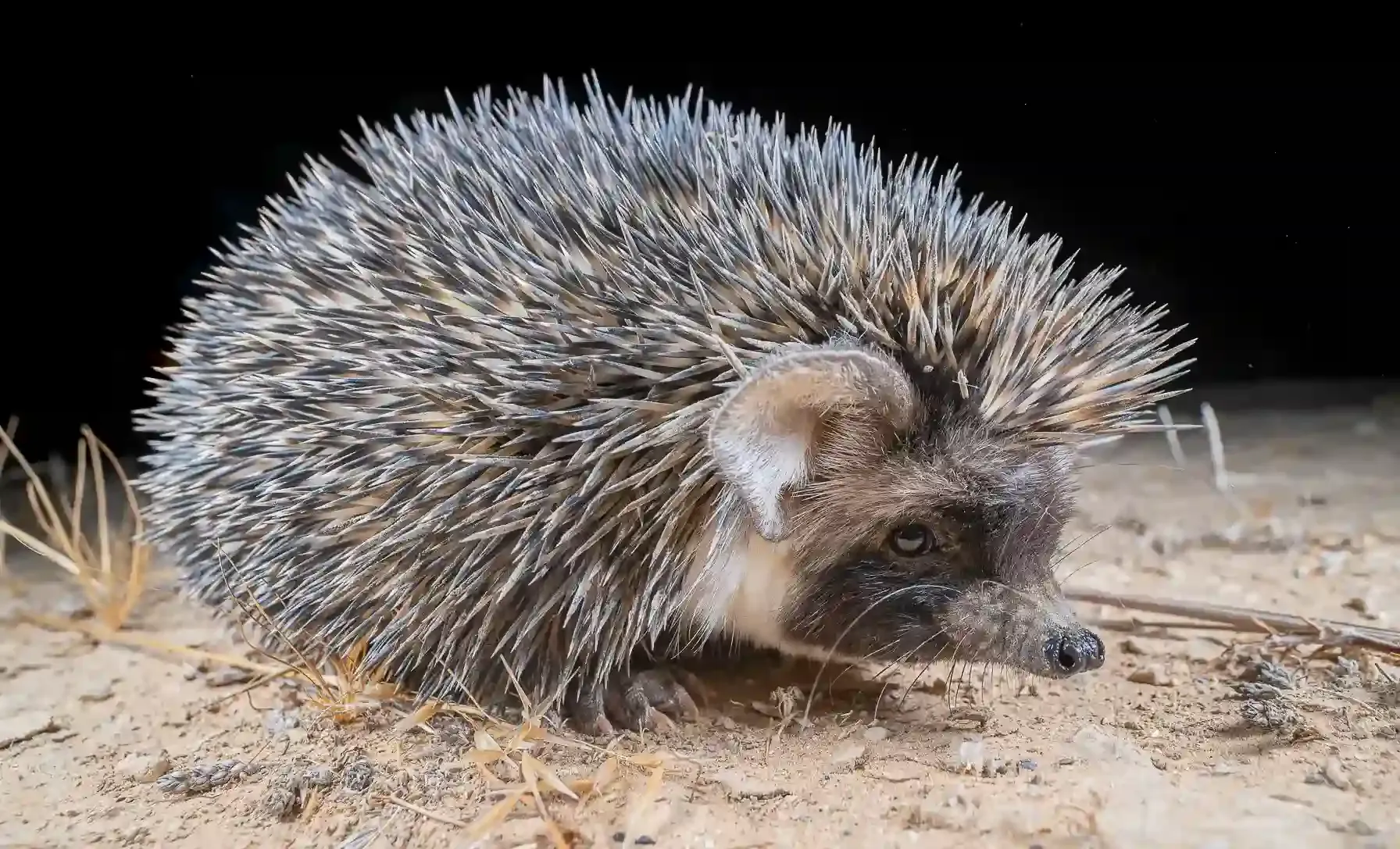 |
| Desert Hedgehog |
The desert hedgehog is a species of
hedgehog that can be found in the deserts and arid regions of Saudi Arabia and
other parts of the Middle East. These small, spiny mammals have a round body
covered in sharp spines, providing excellent protection against predators. The
Indian desert hedgehog has adapted to survive in arid environments by obtaining
moisture from its food and conserving water through specialized kidney
functions. They are nocturnal creatures, emerging at night to forage for
insects, small invertebrates, and plant material.
20. Dromedary Camel
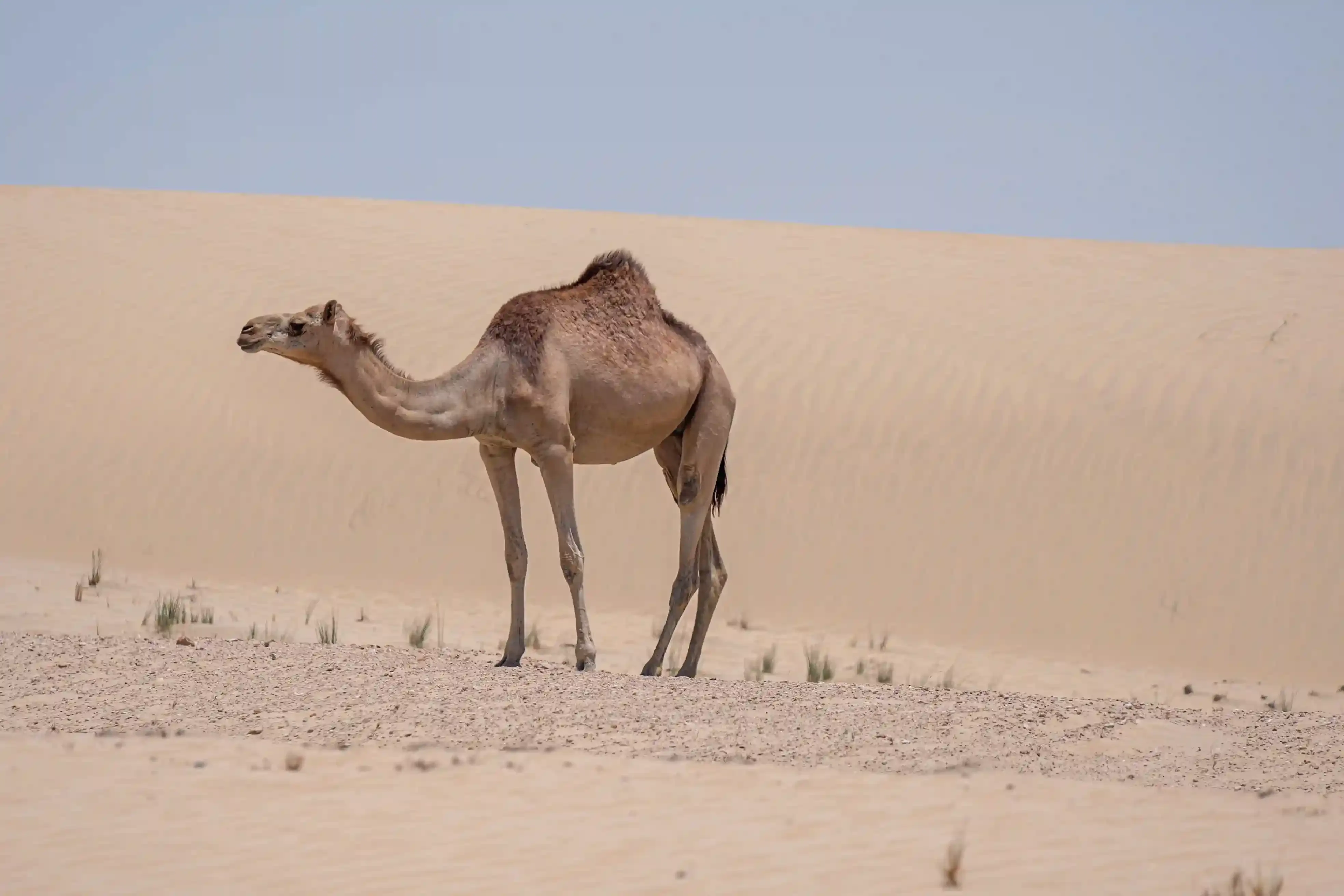 |
| Dromedary Camel |
The Dromedary camel also known as the Arabian camel, is a
remarkable desert-adapted mammal found in Saudi Arabia and other arid regions
of the Middle East. Known for its single hump, the Dromedary camel is well-suited
for traversing vast desert landscapes. It has long, slender legs, padded feet,
and the ability to withstand extreme temperatures and water scarcity. These
herbivores have a tough and shaggy coat that protects them from harsh
desert conditions. Dromedary camels have been domesticated for centuries,
serving as valuable pack animals, sources of milk and meat, and a cultural
symbol of the Arabian Peninsula.





